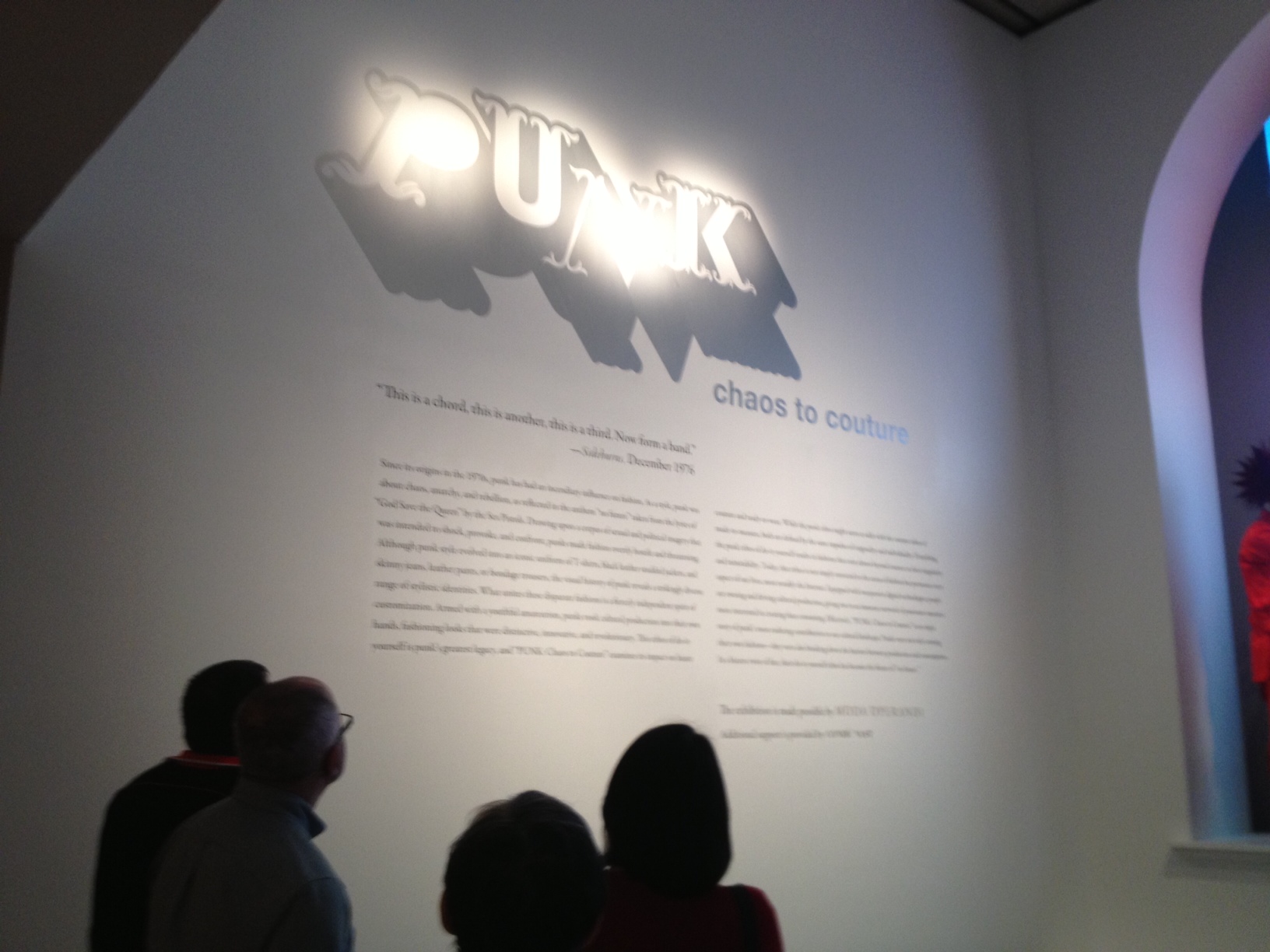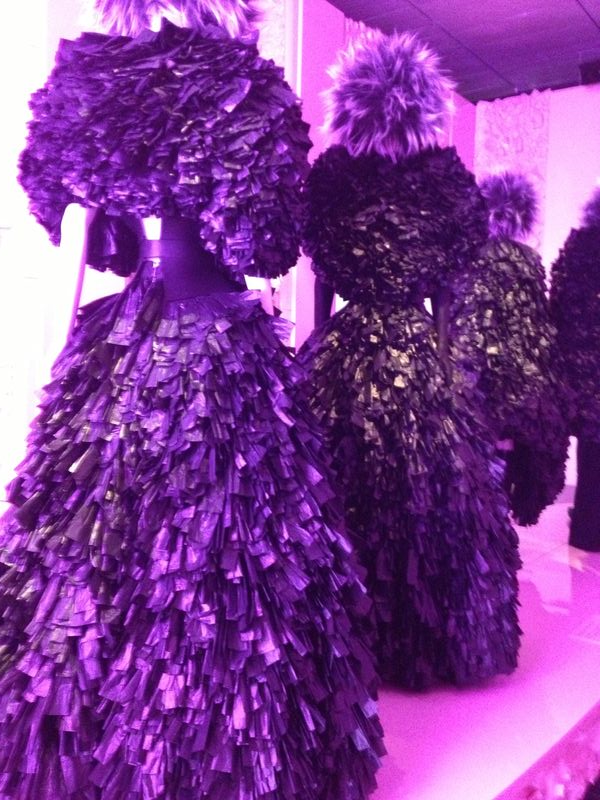Makeup
Museum (MM) Musings is a series that examines a broad range of museum
topics as they relate to the collecting of cosmetics, along with my
vision for a "real", physical Makeup Museum. These posts help me
think through how I'd run things if the Museum was an actual
organization, as well as examine the ways it's currently functioning.
I also hope that these posts make everyone see that the idea of a
museum devoted to cosmetics isn't so crazy after all – it can be done!
Above are two pictures I snapped with my phone (flash off, of course) at the Metropolitan Museum's "From Chaos to Couture" show back in May. Promptly after I took the second one, a guard came up and yelled that no photography was allowed. He literally raised his voice at me, his face turning purple, nostrils flaring. I was not a happy camper, as 1. there wasn't a sign posted at the beginning of the exhibition stating that pictures were prohibited; 2. I paid the full "recommended" donation AND bought the exhibition catalog AND a t-shirt, not to mention I took time off work specifically to travel up to NYC to see the show – after I spent that much money at their museum, I think I'm entitled to take a few cell phone pics for personal use; and 3. There was no reason for the guard to get so furious and make a scene – he could have just quietly, politely informed me that photos weren't allowed. From his reaction, you might have thought I was snatching the clothes off the mannequins and trying them on myself.
This anecdote raises not only my blood pressure but the question of whether I would allow photos in the Makeup Museum if it occupied a physical space. Obviously I'm leaning towards the affirmative, but I will explore both sides of the argument.
First, let's take a look at why some museums prohibit photography of any kind. In the "old" days, i.e., when I was a wee lass studying art history in college over a decade ago, most museums allowed photography as long as you took the flash off your camera. The bursts of bright light and heat damage the pigments of a painting, helping them fade and deteriorate much more rapidly than they would otherwise. However, in recent years I feel as though there's been a significant shift in museums' photography policy. It seems that most museums now ban all photography. Their top reasons:
1. Taking photos creates even more congestion than there normally would be. With the ubiquitousness of smartphones, it's so much easier than it was previously to take a quick picture of something that catches your eye, which in turn equals more people stopping to take pictures.
2. Visitors are "stealing" from the museum by taking their own pictures rather than buying a postcard or exhibition catalog from the museum store. Picture-taking also reduces income because people will post these pictures online and this will result in fewer visitors – the rationale is that if people can access the image online, they won't have a reason to visit the museum in person.
3. Legal matters. Most museums don't own every piece of artwork that's on display. If there's a special exhibition that has works on loan, the museum who loaned the works may not allow photographs of them. Additionally, there's the issue of copyright infringement (read this balanced article on museums and photographing copyrighted pieces.)
4. It's easier than saying "no flash photography". I have no evidence to back this up, but my hunch is that museum directors simply decided to ban all photography due to people not knowing how to turn the flash off their camera or ignoring the rule of no flash.
Some bloggers, rather pretentiously, I might say, add their own ludicrous reasons: it's "tacky" and turns museums into tourist traps; the clicking of the camera is distracting to those trying to quietly appreciate the art; it cheapens the museum experience by turning the works of art into mere photo props – people aren't looking at the art but rather only an opportunity for a picture.
Now, I want to counter these arguments and explain why photos in museums should be allowed. (I still agree that the flash needs to be off – the camera sound isn't distracting but the light definitely is, and it could hurt the art).
1. Rooms with popular works of art and exhibitions will always be crowded. The taking of pictures is the least of the problems with trying to get a glimpse of, say, the Mona Lisa. I visited the Louvre and let me tell you, there were just as many people crowding around to view it as there were people taking pictures. During the same trip when I went to the Musée d'Orsay, which strictly enforces its no-photography rule, I could barely see the work I was most excited about (Manet's Le déjeuner sur l’herbe) because of all the people. They were surprisingly well-behaved – no one was attempting to break the photography ban – but the sheer volume of people meant you just had to wait until there was a small clearing to actually get a decent look at the painting. Prohibiting photography is not going to lessen congestion.
2. Museum store merchandise doesn't always meet the needs of visitors. During my Met visit, I bought the catalog but still took pictures of the exhibition. You know why? Because I wanted to remember the layout of the rooms and re-read the exhibition label text on the walls – things that aren't included in the catalog. Also, people might want a shot of a particular piece that has meaning to them but because it's not a hugely popular work, there is no postcard or book with the picture available, and even the museum's website doesn't provide an online image. Another example I can provide is when I went to the Victoria and Albert Museum in London. I fell in love with all the stunning artifacts in the jewelry cases but did not take pictures, since there was a sign at the front of the gallery saying they were prohibited. Oh well, I thought, I'm sure all this amazing stuff is in a book at their store. But when I went to the store there was no jewelry collection book. This point is especially important to keep in mind for the so-called "tacky tourists" – I can't get on a plane and visit that jewelry exhibit whenever I please, so I would appreciate having a nice big book to remember it by, and if they don't sell one, I would at least like some crappy pictures I took with my phone. It's better than nothing! Finally, a postcard of the work of art you're interested in doesn't have you or your loved ones in it, nor does it fully capture a visitor's memory. The reason people take pictures of themselves or their families and friends standing with a piece of art is because they want a reminder of that moment, of being able to look back and say, "Hey, I saw my favorite work in person! There I am standing next to it. How cool!" Books, posters, postcards, etc. that you can buy in a store just don't do that. I also suspect that most museum-goers will still buy store merchandise even if they have their own pictures. It's meaningful to have pics you took yourself, but many visitors also love the high-quality, glossy images that only store merchandise provides.
3. Legal matters. Okay, I can't really argue with this. If a museum allows photography of a work that's on loan by a museum that doesn't permit photos of that work, the borrowing museum could get in a lot of trouble. A lawsuit could shut it down in one fell swoop. So I understand museums need to err on the side of caution. However, they need to make it very clear to visitors that some pieces or exhibitions are off-limits for photography. In the case of my experience at the Met, would it have killed them to put some signage up indicating that taking pictures of that particular exhibition was forbidden? If they had done that, most people, myself included, wouldn't attempt to take pictures. Thus the guards wouldn't have to spend all their energy yelling at people taking pictures – they could protect the art from real damage, like the attack that recently occurred at the National Gallery in the UK. I don't think it's coincidence that this museum doesn't allow pictures – the guards were probably too busy screaming at hapless tourists to notice a man trying to deface Constable's The Hay Wain.
4. The times, they are a-changin'. We are rapidly heading in the direction of an image-based culture. While I don't think text will ever be fully replaced by images, it's important to accept the how much sway social media platforms like Instagram and Tumblr have both in the art world and society at large. From ArtNews: "As a culture, we increasingly communicate in images. Twenty years
ago, a museumgoer might have discussed an interesting work of art with
friends over dinner. Today, that person is more likely to take a picture
of it and upload it to Facebook…or perhaps that museumgoer might
remix his or her photo with other visual elements and transform it into
something new. Every day, users on image-sharing sites such as Tumblr
create their own diptychs, collages, and themed galleries devoted to
everything from ugly Renaissance babies to Brutalist architecture. This transformation in the way in which people digest visual
stimuli—not to mention the rest of the world around them—is something
that Harvard theoretician Lawrence Lessig has described as a shift from 'read-only' culture (in which a passive viewer looks upon a work of art)
to 'read-write' culture (in which the viewer actively participates in a
recreation of it). The first step toward recreating a work of art, for
most people, is to photograph it, which, ultimately, isn’t all that
different from the time-honored tradition of sketching." Basically, museum directors can't ignore the impact of modern-day picture-sharing. Instead of trying to fight it and eliminate picture-taking completely, museums need to use new social media and technology to their advantage. One blogger sums it up best with his experience visiting the Grammy Museum, which bans picture-taking:
"I snapped some photos when nobody was looking. And I’m hardly
alone – a Flickr or Google search will confirm that hundreds of pics of
this place are online, despite their photo ban. The lesson is this: With all the tiny digital cameras these days and even cell phone cameras, people will take photos in your establishment and they will end up on the Internet, whether you like it or not. There’s no use trying to fight it. To me, museums that still ban photography are like record companies
in the late ‘90s that opposed downloading. Instead of embracing the
technology and using that free publicity to their advantage, they
stubbornly stick to an antiquated view that winds up being a lose-lose
scenario for everyone involved."
Finally, I've already countered most of the concerns various bloggers have regarding museum photography, but I will address a couple more here. I don't think allowing pictures "cheapens" the museum experience at all, nor does it prevent people from fully engaging with the art. The author at the Everywhereist asks, "If everyone was snapping photos all around him, do you think Cameron [in the film Ferris Bueller's Day Off] could have had his moment in front of Seurat’s A Sunday on La Grand Jatte?" The scene she is referring to is from a movie. I'm sure the museum closed the gallery to the public that day in order for the camera crew to get the scene without anyone interfering. Plus Cameron Frye is a totally fictional character and thus, so are his "moments". Bottom line: it's a moot point.
The Grumpy Art Historian says that "People taking photographs in museums is distracting. Even non-flash
photography can be a distraction, with those annoying electronic shutter
sounds." If that's the most annoying thing about visiting a museum to you, consider yourself lucky. Personally, I find the hordes of hyperactive schoolchildren who don't understand why they're there, the occasionally inane comments loudly expressed by other museum-goers, or *shudder* people who actually try to TOUCH the artwork, to be far more irritating than the tiny click of a camera. Eliminating cameras will not, unfortunately, cut down on other obnoxious behavior.
The last article I want to address is one that appeared at the Guardian. The author writes, "I was being jostled and pushed not by people anxious to get a better view of the art on show in one of the world's great museums, but by mobile phone owners rudely trying to ensure no one blocked their
desired camera angle. They were there not to see and be inspired by
artists of genius, but to take snaps to prove they were there." First of all, for really popular works of art, people get jostled all the time – and not just by other people taking pictures. Once again, prohibiting photography will not reduce crowds or rude behavior. Secondly, who cares if they wanted a picture just to prove they were there? Personally, I'd be flattered if people visited the Makeup Museum only to brag about it but not appreciate any of the items. At least I got them in the door, and that's what matters.
My rough plan for the Makeup Museum's photography policy consists of the following:
1. Allow photography for the general public for non-commercial use, but no flash or tripods will be permitted. Additionally, a "one and done" policy will be in place, where if someone takes a picture
with their flash on, they get a warning, and if they do it again they
get thrown out of the museum. While it's still debated as to whether today's cameras have as damaging a flash as the flashbulbs used in older cameras, I don't want to take any chances. Most of the Makeup Museum's collection consists of delicate powders whose colors can fade quickly without being hastened by flash photography.
2. Allow professional photography for bloggers and other members of the press, but they will need to pay for a press/photographers' pass. This idea has been implemented with great success at the Indianapolis Museum of Art.
3. As for copyright and intellectual property, those are non-issues. All of the objects in the collection are owned by me at the moment and were purchased when they were for sale to the public. None are on loan from another person or institution.
What do you think both of my proposed outline for photography and non-flash photography in museums in general? Have you ever gotten yelled at by a hostile guard for taking a picture, not knowing they were banned?



